Accepted Scientific Name: Echinocereus reichenbachii (Terscheck ex Walp.) Haage jr. ex Britton & Rose
Cactaceae (Britton & Rose) 3: 25. 1922 [12 Oct 1922] ; vide Gray Herb. Card Cat Britton & Rose
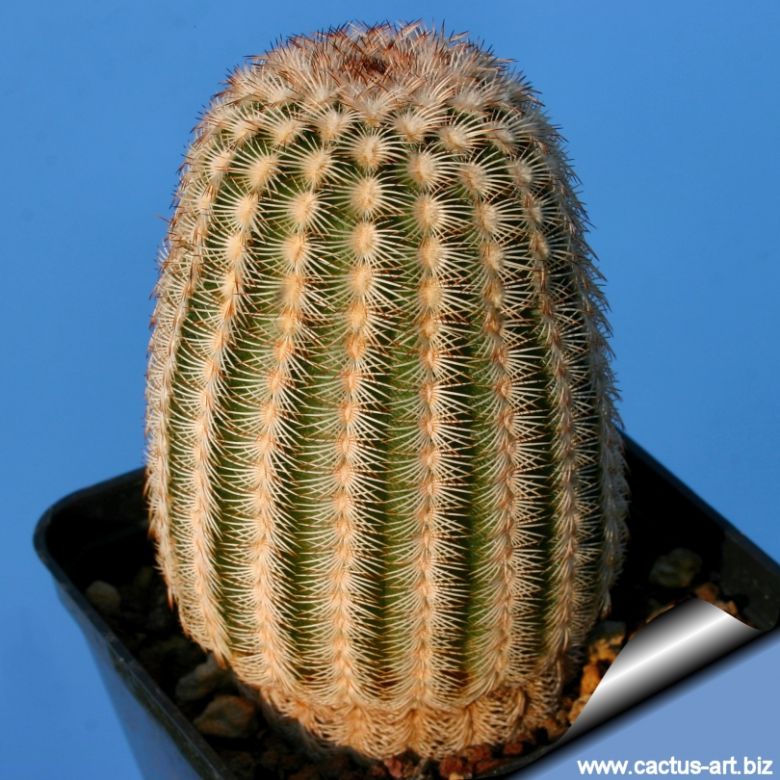
Echinocereus reichenbachii subs. caespitosus Photo by: Cactus Art
Also known as the “White Lace Cactus of Texas” it is a fine plant with very attractive, large, fragrant pink blooms, unusual in the flat clusters of spines which spread comb-like back over the ribs.
Origin and Habitat: The so called "caespitosus" is the form found in central Texas.
Habitat: It thrives in a variety of sites and soils often found growing out of cracks in solid limestone rock.
Synonyms:
See all synonyms of Echinocereus reichenbachii
Common Names include:
ENGLISH: Purple Candle Cactus, Merry Widow Cactus, Classen's Cactus, Lace Cactus (due to the look of the spines), Lace Hedgehog Cactus, White Lace Cactus of Texas
Description: Echinocereus reichenbachiiSN|7575]]SN|7575]] subs. caespitosus is a local or morphological form of the widespread and variable Echinocereus reichenbachiiSN|7575]]SN|7575]] found in central Texas. The subs. caespitosus usually lack central spines and is weakly distinguished from typical "reichenbachii". A few specimens have 1 or 2 central spines, but in most cases central spines are not present, giving the entire stem surface an uniform, lace spines appearance. However the distinguishing characteristics of subs. caespitosus, appear to fall within the natural variation of Echinocereus reichenbachiiSN|7575]]SN|7575]] and it should be synonymized with the latter, but it still has a value for a collector because they identify plants with particular characters.
Stems. As the species.
Areoles: As the species.
Spines: As the species, except 15-36 radial spines, usually interlocking with adjacent areoles; in extreme northwestern part of range individuals with 15-20 radials become majority in some populations.
More...Subspecies, varieties, forms and cultivars of plants belonging to the Echinocereus reichenbachii group
 Echinocereus baileyi var. brunispinus Backeb.: No central spine with brown, intelacing, bristly, radials spines. Distribution: Oklahoma.
Echinocereus baileyi var. brunispinus Backeb.: No central spine with brown, intelacing, bristly, radials spines. Distribution: Oklahoma. Echinocereus melanocentrus J. Lowry: same as: Echinocereus reichenbachii subs. fitchii
Echinocereus melanocentrus J. Lowry: same as: Echinocereus reichenbachii subs. fitchii  Echinocereus oklahomensis Lahman: It is one of the local forms of Echinocereus reichenbachii subs. baileyi distinguished by having 20-24 radial spines only 2 cm long and 0-2 centrals. Distribution: south-west Oklahoma.
Echinocereus oklahomensis Lahman: It is one of the local forms of Echinocereus reichenbachii subs. baileyi distinguished by having 20-24 radial spines only 2 cm long and 0-2 centrals. Distribution: south-west Oklahoma. Echinocereus pailanus Fritz Schwarz ex Backeb.: has fine-textured pinkish-red or pink-brown pectinated spines. distribution Coahuila, (Sierra Paila)?
Echinocereus pailanus Fritz Schwarz ex Backeb.: has fine-textured pinkish-red or pink-brown pectinated spines. distribution Coahuila, (Sierra Paila)? Echinocereus reichenbachii (Terscheck ex Walp.) Haage jr. ex Britton & Rose: Small solitary or slowly branching cylindrical shaped cactus.It has 20 to 36, white to tan pectinatd radial spines held closely against the the ribs of the stems, organized in 2 series. Central spines usually absent.
Echinocereus reichenbachii (Terscheck ex Walp.) Haage jr. ex Britton & Rose: Small solitary or slowly branching cylindrical shaped cactus.It has 20 to 36, white to tan pectinatd radial spines held closely against the the ribs of the stems, organized in 2 series. Central spines usually absent. Echinocereus reichenbachii var. albertii L.D.Benson: This cactus has large, pretty pink flowers with a very dark center. It has dark cental spines 0, or 1, 2 to 3 mm long, purple-black in colour. The 14 to 20 radial spines are white with dark purple tips number, straight, closely pectinate, 3 to 6 mm long.
Echinocereus reichenbachii var. albertii L.D.Benson: This cactus has large, pretty pink flowers with a very dark center. It has dark cental spines 0, or 1, 2 to 3 mm long, purple-black in colour. The 14 to 20 radial spines are white with dark purple tips number, straight, closely pectinate, 3 to 6 mm long. Echinocereus reichenbachii var. albispinus (Lahman) L.D.Benson: This is a form of Echinocereus baileyi with white to delicately pinkish spines, up to 1-2 cm long.
Echinocereus reichenbachii var. albispinus (Lahman) L.D.Benson: This is a form of Echinocereus baileyi with white to delicately pinkish spines, up to 1-2 cm long. Echinocereus reichenbachii f. albispinus hort. non Lahman: It is intermediates between Echinocereus baileyi and Echinocereus reichenbachii subsp. caespitosus. It has white neat comb-like short spination. It is one of the smaller Echinocereus species.
Echinocereus reichenbachii f. albispinus hort. non Lahman: It is intermediates between Echinocereus baileyi and Echinocereus reichenbachii subsp. caespitosus. It has white neat comb-like short spination. It is one of the smaller Echinocereus species. Echinocereus reichenbachii subs. armatus (Poselg. ex Engelm.) N.P.Taylor: This cactus has large, pretty pink flowers with a clearer often greenish center. It has 1 or 2 sharpen, light brown, darkly tipped spines.
Echinocereus reichenbachii subs. armatus (Poselg. ex Engelm.) N.P.Taylor: This cactus has large, pretty pink flowers with a clearer often greenish center. It has 1 or 2 sharpen, light brown, darkly tipped spines. Echinocereus reichenbachii subs. baileyi (Rose) N.P.Taylor: No central spine with about 16 intelacing radials spines, that are bristly spreading and variously coloured, white, yellowish, fox red, brown or pink. Distribution: Oklahoma, Texas.
Echinocereus reichenbachii subs. baileyi (Rose) N.P.Taylor: No central spine with about 16 intelacing radials spines, that are bristly spreading and variously coloured, white, yellowish, fox red, brown or pink. Distribution: Oklahoma, Texas. Echinocereus reichenbachii f. brevispinum hort.: short spined form.
Echinocereus reichenbachii f. brevispinum hort.: short spined form. Echinocereus reichenbachii subs. caespitosus (Engelm.) W.Blum & Mich.Lange in W.Blum et al.: The so called "caespitosus" is the form found in central Texas. Usually this plants lack central spines and are weakly distinguished from typical "reichenbachii".
Echinocereus reichenbachii subs. caespitosus (Engelm.) W.Blum & Mich.Lange in W.Blum et al.: The so called "caespitosus" is the form found in central Texas. Usually this plants lack central spines and are weakly distinguished from typical "reichenbachii".- Echinocereus reichenbachii var. castaneus (Engelm.) nov. comb. ined.
 Echinocereus reichenbachii f. cristatus hort.: Crested form.
Echinocereus reichenbachii f. cristatus hort.: Crested form. Echinocereus reichenbachii subs. fitchii (Britton & Rose) N.P.Taylor: has brown central spines, much longer than white radials and large flower, slightly scented, pink-purple with dark burgundy centre. Distribution: Starr, Webb, and Zapadta Co., Texas
Echinocereus reichenbachii subs. fitchii (Britton & Rose) N.P.Taylor: has brown central spines, much longer than white radials and large flower, slightly scented, pink-purple with dark burgundy centre. Distribution: Starr, Webb, and Zapadta Co., Texas  Echinocereus reichenbachii subs. perbellus (Britton & Rose) N.P.Taylor: It has 0-1 central spine, fewer than 20 radials, and elliptic areoles; Range: Colorado, New Mexico, and central Texas.
Echinocereus reichenbachii subs. perbellus (Britton & Rose) N.P.Taylor: It has 0-1 central spine, fewer than 20 radials, and elliptic areoles; Range: Colorado, New Mexico, and central Texas. Echinocereus reichenbachii var. purpureus (Lahman) D.Parker: intermediate between Echinocereus baileyi and Echinocereus caespitosus, has reddish neat comb-like spines with bright purple flowers. Distribution: Oklhoma
Echinocereus reichenbachii var. purpureus (Lahman) D.Parker: intermediate between Echinocereus baileyi and Echinocereus caespitosus, has reddish neat comb-like spines with bright purple flowers. Distribution: Oklhoma
Notes: The Echinocereus reichenbachiiSN|8503]]SN|7575]] species group (E. reichenbachii, E. chisosensis, E. rigidissimus, E. pseudopectinatus, and a number of Mexican species) has unusually thin, bristle-like spines clothing the flowers and fruits as well as conspicuous, cobwebby tomentum of unusually long areolar hairs. The persistent, dry, white features of the flower tube are an essential distinction contrasting with the otherwise similar Echinocereus pectinatusSN|7575]]SN|8503]] species group (E. pectinatus, E. dasyacanthus, and possibly E. bonkerae), regardless of the spectacular, colourful floral displays.
Bibliography: Major references and further lectures
1) Edward F. Anderson (2001) “ The Cactus Family”.
2) Curt Backeberg “Cactus Lexicon” Sterling Publishing Company, Incorporated, 1978
3) David Hunt, Nigel Taylor “The New Cactus Lexicon” DH Books, 2006
4) Del Weniger “Cacti of the Southwest: Texas, New Mexico, Oklahoma, Arkansas, and Louisiana” University of Texas Press, 1969
5) James Cullen, Sabina G. Knees, H. Suzanne Cubey “The European Garden Flora Flowering Plants: A Manual for the Identification of Plants Cultivated in Europe, Both Out-of-Doors and Under GlassCambridge University Press, 11/August/2011
6) Lyman David Benson “The Cacti of the United States and Canada” Stanford University Press, 1982
More...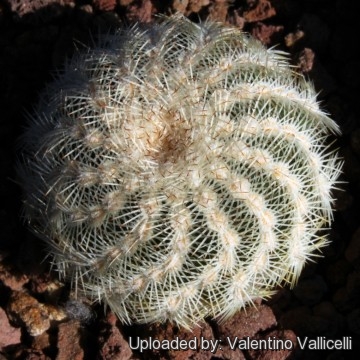 Echinocereus reichenbachii subs. caespitosus Photo by: Valentino Vallicelli
Echinocereus reichenbachii subs. caespitosus Photo by: Valentino Vallicelli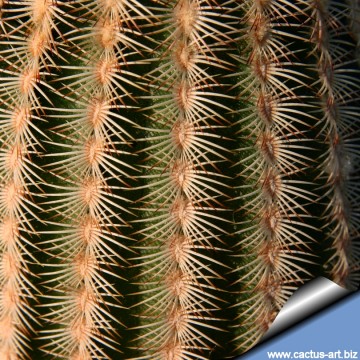 Echinocereus reichenbachii subs. caespitosus Photo by: Cactus Art
Echinocereus reichenbachii subs. caespitosus Photo by: Cactus Art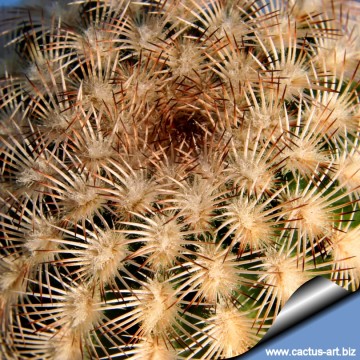 Echinocereus reichenbachii subs. caespitosus Photo by: Cactus Art
Echinocereus reichenbachii subs. caespitosus Photo by: Cactus Art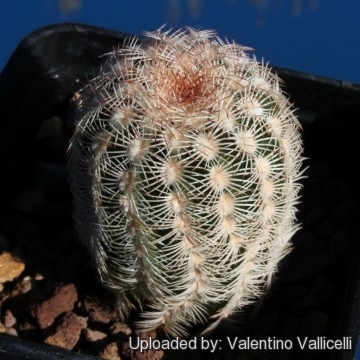 Echinocereus reichenbachii subs. caespitosus Photo by: Valentino Vallicelli
Echinocereus reichenbachii subs. caespitosus Photo by: Valentino Vallicelli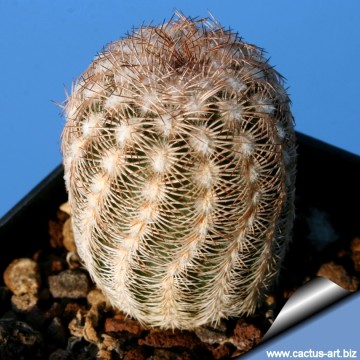 Echinocereus reichenbachii subs. caespitosus Photo by: Cactus Art
Echinocereus reichenbachii subs. caespitosus Photo by: Cactus Art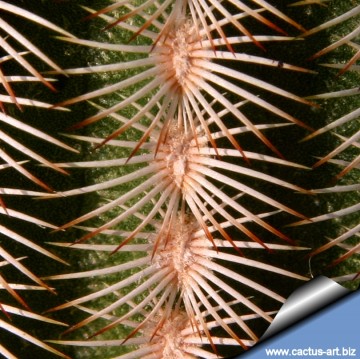 Echinocereus reichenbachii subs. caespitosus Photo by: Cactus Art
Echinocereus reichenbachii subs. caespitosus Photo by: Cactus Art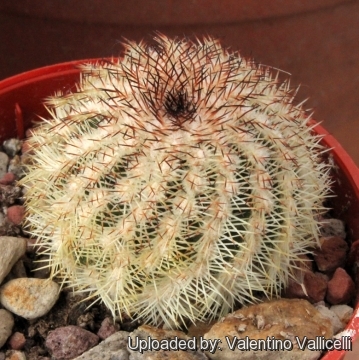 Blue river, OK, (white spines) Photo by: Valentino Vallicelli
Blue river, OK, (white spines) Photo by: Valentino VallicelliSend a photo of this plant.The gallery now contains thousands of pictures, however it is possible to do even more. We are, of course, seeking photos of species not yet shown in the gallery but not only that, we are also looking for better pictures than those already present.
Read More... Cultivation and Propagation: Echinocereus reichenbachiiSN|7575]]SN|7575]] subs. caespitosus is sensitive to overwatering (rot prone) needs a very good drainage to avoid rotting, but requires more moisture than true desert cacti to grow and produce flowers, Keep drier and cool in winter. Need full sun. It is very cold resistant from -10° to -25° C (depending on clones) or less for short periods of time. It is a fine plant for a rock garden or container, contrasts well with agaves, yuccas, and low-growing flowering plants.
Propagation: Seeds, also can be grown from cutting as it slowly branches from the base.

















